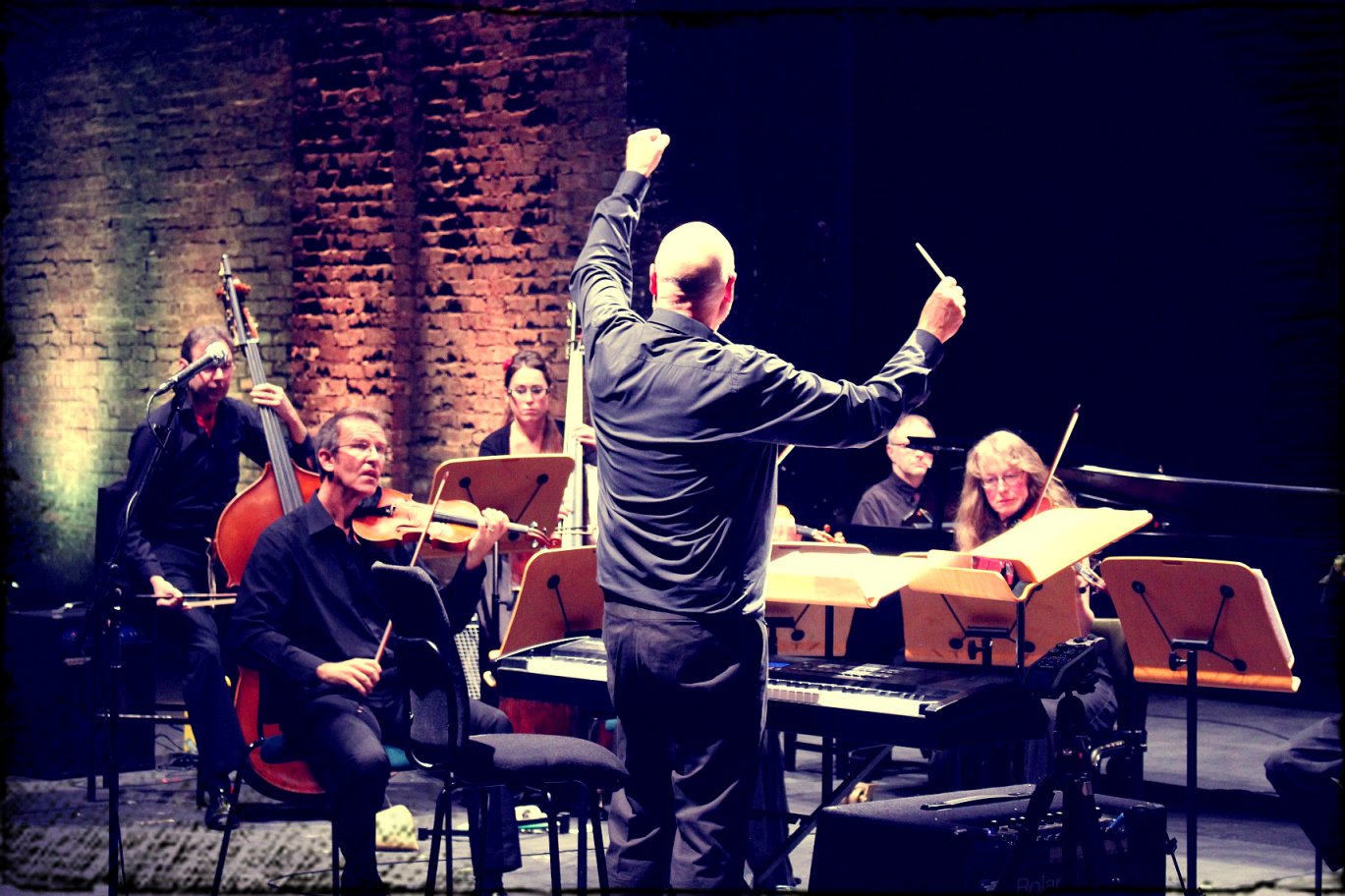
RSNO Alchemy, which is exploring new works, methods of performance, improvisation & collaboration.
Photo: Carol Fleming
Relationships with a future
To really value artists working in participatory settings, a greater priority needs be placed on training, development and investing for the future, says Susanne Burns.
Persuading some employers and commissioners to invest in support for artists working in participatory settings is a challenge at the best of times. Try doing it when they are cutting budgets to the bone and you are likely to be on a hiding to nothing. Yet for all the changes within the arts funding landscape, you could say there is no better time to invest in artists and their work in participatory settings. After all, it is precisely when budgets for art in participatory settings are shrinking that employers and commissioners need to make the very most of what they spend. And supporting artists to deliver the best possible work is a surefire way of achieving that extra value.
Stakeholders working in arts in participatory settings… need to recognise that supporting artists in their work will strengthen the industry as a whole
‘Value’ is the operative word. A survey conducted for ArtWorks (the Paul Hamlyn Foundation’s initiative) last year showed that more than two thirds of artists working in participatory settings believe that too many people in the sector do not value their work as artistic practice – quite probably because many in the arts sector still fail to place a high enough value on participatory practice. Starting to value the work we are already doing, and exploring how employers can get even more out of it by working differently (and investing in support for artists), is surely a positive step forward in the current climate. The cost may well not be as big as many fear. ArtWorks was set up to encourage support for artists working in participatory settings and we have spent four years piloting and testing training and CPD opportunities. A recent paper concluded that CPD needs “only relatively modest funding – as long as the proposition is focused”.
In an article for us (pdf), former Royal Scottish National Orchestra Chief Executive Michael Elliott says the findings should encourage both employers and artists alike to place a priority on training and development. He adds: “As a sector we need to go further and build CPD into all programme and product design and funding applications (and not only for the delivery of activity in participatory settings). From there we can really begin to learn lessons from our experiences.” Embedding the right cost-effective development opportunities for artists is fundamental to increasing the actual and perceived value of art in participatory settings. So too is agreement between stakeholders from the outset on what ‘quality’ actually looks like, while accepting that different people view quality through different lenses.
The recent paper Understanding demand – building effective relationships between employers and artists highlights the vital role of the project manager in brokering these different views and points to the range of blueprints available to help employers get the most from their participatory work, including codes of practice and recommended national occupational standards (NOS). The potential rewards of following the path set out by the recommended NOS are huge. As Elliott says: “The adoption, as recommended, of national occupational standards should help all parties scrutinise their activities to ensure they are being conducted in a way that ensures the highest quality. With the right support, we can enable all partners to deliver more diverse, effective and inclusive engagement.”
Investing in support for artists and building on approaches which have been tried and tested by us and others over the decades is not just about improving the quality and value of what we do now. It is about making the work we do in the future more effective. Keeping an eye on this bigger picture is vital. In an environment where so many artists are freelances, employers and commissioners can be forgiven for questioning the value of providing training and support for people who will only move on once the project is finished. The point, as Elliott says, is that stakeholders working in arts in participatory settings – whether they are artists, employers or funders – need to recognise that supporting artists in their work will strengthen the industry as a whole, and that a stronger, more resilient and adaptable ‘industry’ will ultimately benefit everyone. It will firmly embed the work in the minds of arts funders and non-arts commissioners so they no longer see it as the easy option when looking for future cuts. What is more, it will enable stakeholders to grasp the green shoots of opportunity when things start to improve – and they are improving.
As Creative & Cultural Skills Chief Executive Pauline Tambling pointed out in a recent blog, stakeholders may be operating in a radically different model but the creative sector continues to grow and contribute more to the UK’s GDP than ever before. She says: “The growth area in our sector is often technology-related or associated with big live events and performance. But it is also with those artists and activists who are able to ‘make the work’ by finding their own new ‘customers’ to replace grant funding.” She highlights a range of other opportunities available for artists working in participatory settings: from the large-scale needs of the care sector to emerging opportunities in schools. She highlighted one children’s services department which, as the education sector is downgrading arts education, is enthusiastically embracing a ‘cultural entitlement’ model for its schools.
If we – artists, funders, employers and commissioners – want to realise opportunities like these, we all need to see the bigger picture, value the great work we do and collaborate to support artists and raise arts in participatory practice to new levels of confidence, recognition and ambition.
Susanne Burns is Project Director of ArtWorks.
www.artworksphf.org.uk
Join the Discussion
You must be logged in to post a comment.